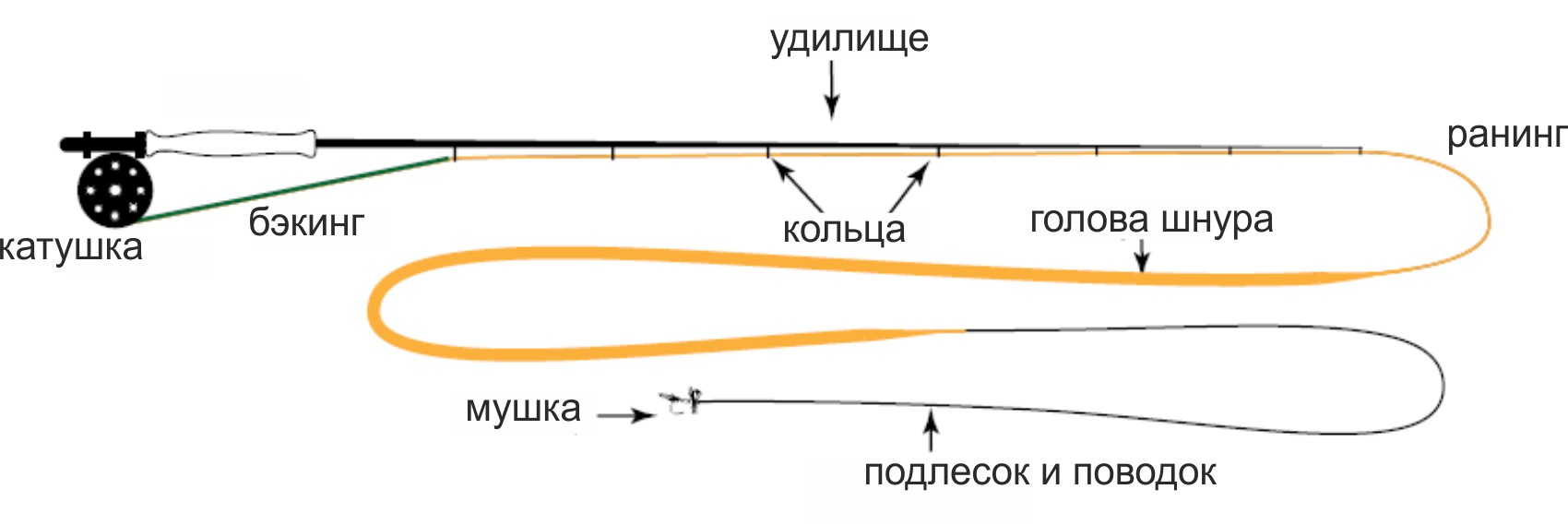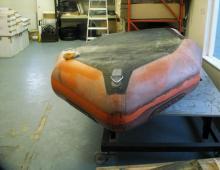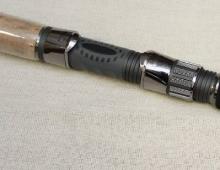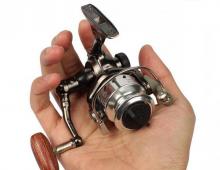Fly fishing tackle for beginners
In the Middle Ages, fly fishing was only available to aristocrats. Quite a lot of time has passed and this type of fishing has become popular among many anglers of all countries.
However, it is less common and little used due to the high cost of equipment and the difficulty of learning the fishing technique itself. Fly fishing is a real art that not everyone can learn.
This type of fishing is great for catching:
- dace,
- grayling,
- carp,
- carp,
- pike, etc.
Components of fly fishing equipment
Tackle designed for fly fishing is significantly different from any other. The lure of fish occurs on a fly made of artificial material.
Fly fishing gear consists of:
- fly reel,
- fly rod,
- fly line,
- backing,
- Leash,
- Undergrowth.
Fly made of artificial material
An important component is the rod. In specialized stores, a huge assortment of fly fishing gear is presented, which makes it possible to find the right one for yourself.
In casting the rod, a cord takes part, which has a certain weight that tends to change. When choosing the length of the tackle, you should take into account the method of fishing, the size of the fish and the features of the terrain.
For fishing on shores covered with dense vegetation, a short rod is perfect, a long rod is worth buying for fishing with a freer exit to the water.
If fishing will be carried out on large, and even trophy fish, it is worth taking a two-handed rod up to 4.5 meters long.
This length will allow you to easily remove the sinking line from the water and perform a ring cast.
Fly fishing rods are mainly made from graphite and fiberglass.
Graphite is the best, perfect material for this tackle, unusually light, but quite expensive.
A wide choice extended to the action of the rod:
- Fast build. There is a bend in the upper quarter. Perfect for long distance casts.
- Medium hardness. Allows you to work both with long-range casting and at short distances. When jerking fish of an impressive size, the flexible tip minimizes the likelihood of a breakage of the leash.
- Moderately soft action. There is a fold from the top to the middle of the tackle. Gives you the ability to carry out a smooth cast, works quite softly. Well proven when fishing near the shore.
- Soft build. The best type for fishing with short casts.
The rods are equipped with:
- traditional rings, bent from wire.
- regular rings, in which there is a ceramic insert.
Traditional rings are the lightest, besides, in severe frosts they are less prone to freezing, this should be taken into account when choosing.
The handle of the tackle is very often made of cork, in budget models it is made of synthetic rubber. The handle is reminiscent of the image of a cigar and the classical form.
Light class rods are equipped with a lightweight reel seat, medium and heavy classes are equipped with a screw reel seat.
Fly line can only be used in fly fishing gear. It provides the ability to throw a fly to the desired distance and dive to a fixed depth of the reservoir.
The cord acts to some extent as a continuation of the tackle and acts as a float. They can produce unique wiring that is not available with other gear.
The widest choice of cords will allow even the most fastidious angler to make a choice. Beginning fishermen are advised to buy a floating line, while more experienced fishermen can use any variety.
When choosing a cord, carefully study:
- form
- functionality
There is an AFTMA classification, which divides the lines into classes - from super light to heavy for sea fishing.

It is important to remember that the higher the class number, the heavier the cord.
With the help of this classification system, it is enough to simply select all the necessary components of the gear.
When choosing a cord, you should decide on the size of the fly.
The larger the fly, the greater the mass of the cord. An exception may be the influence of weather conditions.
How to catch more fish?
I have been active fishing for quite some time and have found many ways to improve the bite. And here are the most effective ones:- . Attracts fish in cold and warm water with the help of pheromones included in the composition and stimulates their appetite. It's a pity that Rosprirodnadzor wants to ban its sale.
- More sensitive gear. About reviews and instructions for other types of gear you can find on the pages of my site.
- Lures using pheromones.
For catching fish of insignificant weight on a small fly, second and third class cords are suitable. Casting with these cords can be carried out at a distance not exceeding 12 meters.
In windy weather it is very difficult to control the gear due to the very low weight. In such cases, you can use cords of the fourth and fifth classes.
Casting will be carried out at 15-16 meters, it will also be possible to use medium streamers. Cords of middle classes are presented under the sixth and seventh size class.
The casting distance will be about 24 meters. A great opportunity to use large flies and streamers of the second size.
Cords numbered eight and nine are representatives of the heavy class. Used for catching sea trout and salmon.
Perfectly perform their functions in gusty winds, which is a frequent companion of sea fishing. Casting can be carried out at a distance of more than 26 meters.
Super-heavy cords of this class are numbered tenth - fifteenth grade. The casting distance can go beyond 30 meters, it all depends on the skills of the fisherman.
Cords are divided into groups:
- sinking. They provide the opportunity to deliver the fly close to the fish at a depth. There are several subclasses: from slow sinking to super fast sinking.
- floating the cords are filled with microspheres that allow you to stay on the water.
- floating with a sinking end.
Cords also have discrepancies in sinking speed. This is almost always reflected in color. The darker the shade of the cord, the sooner it sinks.
Floating cords are mostly white, blue, yellow. In the absence of the need for deep wiring, sinking cords are not recommended because of the difficulty of their control in the water.
The cords also differ in shape:
- torpedo-shaped- with the help of weighting the front part, it makes it possible to make the longest possible casting.
- double cone– suitable for uniform wiring and ring casting applications.
- cylindrical. The most inexpensive with the same diameter absolutely along the entire length.
The fly line requires care and careful handling. Care should be taken when using household chemicals, which can damage it to some extent, it is not recommended to cast using undergrowth.

When fishing, the line is very susceptible to pollution, algae is layered on the coating, and dirt collects.
The swimming properties of a contaminated cord are reduced, it is difficult to slip through the rings of the tackle.
This is easy to fix. Wash the cord with mild soap and a clean cloth. If there is no soap on fishing, you should at least wipe the cord with a damp cloth.
The cord should be stored in a spool, protected from sunlight and chemicals.
When overheated, the cord tends to twist into a spiral. The new cord can still be stretched, but the old one will be hopelessly damaged.
In order to smoothly lower the fly onto the pond, you should choose a conical undergrowth, thin enough, inconspicuous, but strong leash. We get the length of the undergrowth a little less than the length of the tackle.
When choosing a coil, you can see that they are divided into types:
- multiplier
- automatic
- inertial.
It is especially important that the classes of the reel and rod match. Beginners in fishing should start with an inertial reel with an adjustable brake.
To catch trophy specimens, you need to purchase a backing (additional cord), preferably in two copies - one for training, the second for fishing.
You will also need a connector - a component that makes it possible to easily detach the cord from the undergrowth.
Anglers who are just learning fly fishing skills are advised to use a cotton swab as bait in training. And when fishing, it is desirable to have both dry and wet flies, larger than 3.5.
Having bought the components, you should proceed to the collection of fly fishing:
- Attach the reel to the rod.
- We tie a backing to the coil.
- Having previously wound the cord on the coil, we fix the connector.
- Using a specialized loop, we connect the undergrowth.
- We catch two or three flies. Fly fishing is ready!
fishing technique
The line throwing system will require extensive training. Only in this way can excellent results be achieved. When casting, you should hold the part of the line that will begin to unwind.
Movements should be somewhat slow and smooth. In order to produce the best imitation of a live fly in a pond, it should be observed that the current speed matches the leader.
When playing a fish, you must not rush, but try to tire it out and be sure to make sure that the line does not get tangled. Be sure to keep a landing net nearby!
Tips for a beginner fly fisher:
- Conduct at least a few long training sessions before going on a real fishing trip.
- The choice of bait depends on the preferences of the fish in a particular reservoir.
- Properly equip tackle.
Fly fishing is not so easy, but with constant training, desire and perseverance, skill will not keep you waiting. Good luck with your training and big catch!
Now only I bite!
I caught this pike with a bite activator. No more fishing without a catch and looking for excuses for your bad luck! It's time to change everything!!! The best bite activator of the year! Made in Italy...



